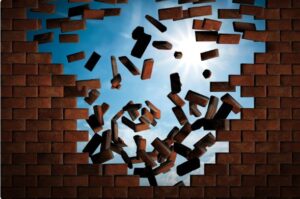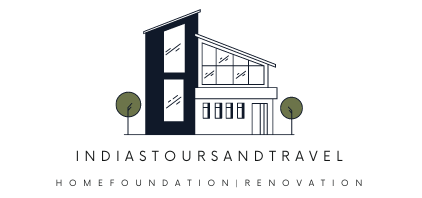 Have you ever noticed signs of deterioration in your home and wondered if it’s something you should worry about? Over time, even the most well-constructed buildings can succumb to structural damage due to wear and tear, natural disasters, or poor construction. To prevent costly repairs or worse yet, an unsafe living environment for your family, being aware of the warning signs is key. In this blog post, we’ll explore some of the common indicators that there could be a problem with your current house structure.
Have you ever noticed signs of deterioration in your home and wondered if it’s something you should worry about? Over time, even the most well-constructed buildings can succumb to structural damage due to wear and tear, natural disasters, or poor construction. To prevent costly repairs or worse yet, an unsafe living environment for your family, being aware of the warning signs is key. In this blog post, we’ll explore some of the common indicators that there could be a problem with your current house structure.
Review a Home Inspector’s Report for Red Flags
Before purchasing a home, a home inspection is essential to ensure that the property is in good shape and worth the investment. A thorough home inspector’s report is an indispensable tool that can alert you to any potential issues that you may not have otherwise noticed.
When reviewing the report, it’s essential to pay attention to any red flags that could indicate significant problems. These red flags can include issues related to the foundation, electrical system, plumbing, and even the roof.
By taking note of these red flags, you can make an informed decision on whether to move forward with the purchase or negotiate repairs before finalizing the deal. Overall, reviewing a home inspector’s report carefully can help you avoid unexpected expenses down the road and ensure a smooth and successful transaction.
Identify Signs of Water Damage in Walls, Floors and Ceilings
Water damage in your home can be sneaky, causing problems that you might not notice until they become bigger issues. But the good news is that there are signs you can look for to identify water damage in your walls, floors, and ceilings. The most obvious sign is discolored areas, such as water stains on the walls or ceilings.
Peeling paint or wallpaper is also a sign that moisture might be present. Another indicator is if your walls or floors feel soft or spongy to the touch. This could mean that the material has absorbed water and is starting to break down. Lastly, if you notice a musty or damp odor coming from a specific area of your home, it might be a sign of hidden water damage.
By keeping an eye out for these signs, you can catch water damage early and avoid dealing with costly repairs in the future.
Look for Structural Cracks and Deterioration
Structural cracks and deterioration are the last things anyone wants to see in their home or building. Not only are they unsightly, but they can also indicate serious safety hazards.
That’s why it’s crucial to conduct routine inspections to identify any issues early on. Signs of structural damage can include cracks in walls, floors, and ceilings, as well as gaps between doors and windows.
While these may seem minor at first, they are often a sign of more extensive damage. By catching these issues early, you can avoid costly repairs and ensure the safety of those in the building.
Check Out Roofing and Foundation Issues
When it comes to ensuring the safety and longevity of your home, checking for roofing and foundation issues should be at the top of your to-do list. These two areas are crucial to the overall integrity of your home and can cause significant problems if left unchecked.
A damaged roof can lead to leaks and water damage, while foundation issues can affect the stability of your entire house. By taking the time to inspect these important components of your home, you can catch any potential issues early and prevent costly repairs down the line.
So, whether you’re a new homeowner or have been in your house for years, make sure to give your roof and foundation the attention they deserve.
Examine Windows and Doors to Spot Warping or Rotting
Your windows and doors are vital components of keeping your home secure and comfortable. However, over time, these structures may experience warping or rotting, which can negatively impact their performance and lead to potential hazards.
To ensure the longevity and efficiency of your windows and doors, take the time to regularly examine them for any signs of wear and tear, such as changes in shape, discoloration, or soft spots in the wood. By taking these proactive measures, you can avoid costly repairs and ensure the continued safety and comfort of your home.
Inspect Your Home’s Interior for Uneven Flooring or Sagging
Your home is your sanctuary, but what if something was lurking beneath your feet? Uneven flooring or sagging can be signs of a much larger issue, which is why it’s crucial to inspect your home’s interior regularly.
Not only can it lead to further damage, but it can also pose a safety hazard. By paying attention to the floors in your home, you can identify signs of trouble early on and take action before it’s too late.
So, take a walkthrough of your home and keep your eyes peeled for anything out of the ordinary. It’s always better to be safe than sorry when it comes to the foundation of your home.
To sum up, when it comes to reviewing a home inspector’s report for red flags, there are several important factors that must be taken into account. First and foremost, signs of water damage in walls, floors and ceilings should be checked; foundation issues need to be examined; roofing needs to be inspected; windows and doors must be looked over for warping or rotting; and any uneven flooring or sagging in the interior of the home should be noted. With the right information and due diligence, you will be able to mitigate the risk of problems with your place of residence. Finally, never ignore even the smallest red flags – following up on them can often save time and money in the long run.


